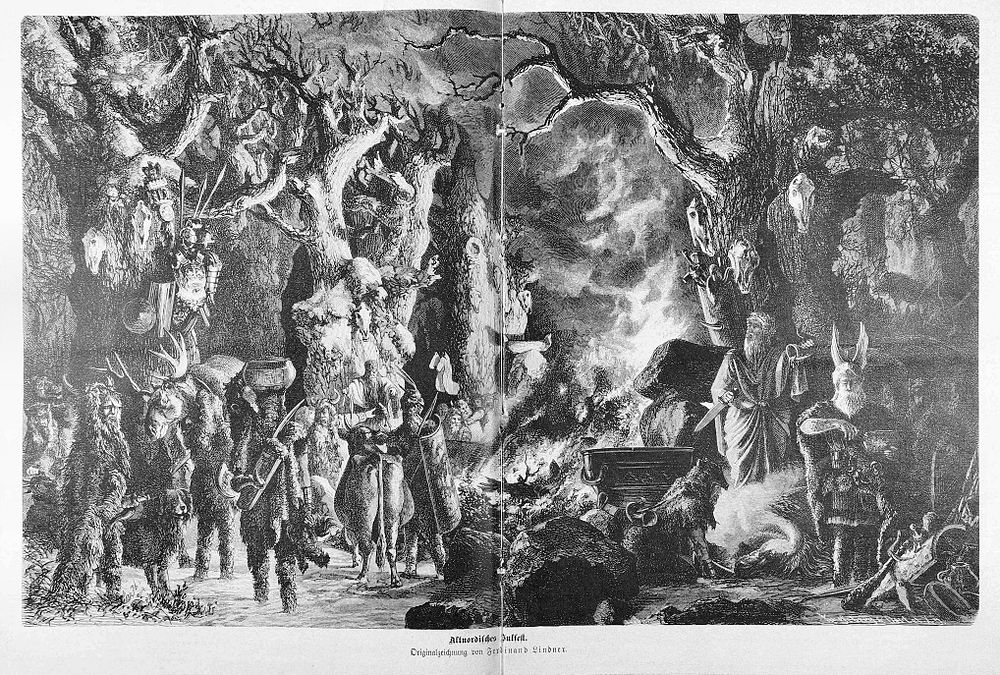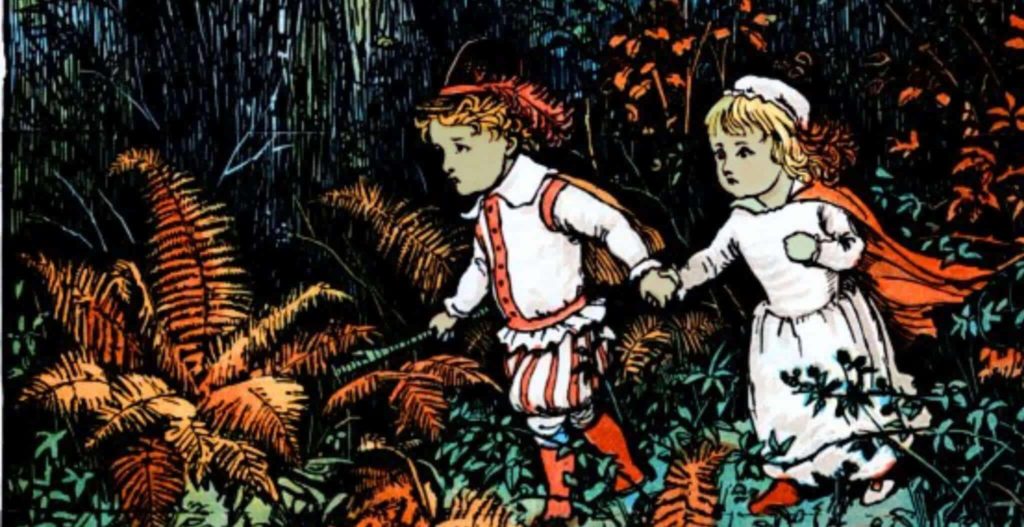Last updated on July 25th, 2022 at 10:56 pm
There are about as many names for Christmas as there are ways of celebrating it. Some call it Xmas, which simply is an abbreviation of Christmas, as the ‘X,’ as it was originally used, isn’t an ‘X’ at all, but rather what is known as a chi-rho, an early Christian symbol for Christ on the cross.
Others call it the Nativity or Noel in France. In Jewish culture, the same period is celebrated as a Hanukkah festival. This doesn’t acknowledge the birth of Jesus but rather the rededication of the Second Temple of Jerusalem after it was reacquired from the Seleucid rulers of the Holy Land by the Maccabean Kings of Judaea in the second century BC.
But of all those names for the Christmas period, perhaps the most perplexing is that of Yule or Yuletide. What does this mean, and how is it related to Christmas?

Odin and Yule
The term Yule derives from Norse and Germanic traditions. It is a synonym of Jól or Jólnir, another word for Odin, the name of the Germanic and Norse god of war and lord of Valhalla. This enormous hall in Norse mythology was in Asgard and to which Odin summoned the greatest of warriors. So often, Odin was referred to as Jólnir or the Yule One.
Odin became associated with winter amongst the Germanic and Norse people of northern Europe, who lived much of the year with much night and darkness around them than the Romans and Greeks of the more southerly Mediterranean.
They associated Odin with the winter solstice, which falls on the 21st of December. Thus, the solstice became associated with Odin and became known as Yule.
The Germanic Celebration of Yuletide
Yule was not just celebrated on the 21st of December by the Germanic and Norse peoples. By the time it became common in Northern Europe, it was already celebrated over three or four days at the height of the Roman Empire, running roughly from the 21st of December to the 24th or 25th.
This was eventually extended into a twelve-day festival known as Yuletide. As we will see, it is not a coincidence that the Christian Christmas was subsequently celebrated over twelve days.
Generally, the Norse and Germanic peoples who celebrated Yule did so by feasting, drinking, and carrying out blood sacrifices. In addition, in many traditions, a wild hunt was involved, which in Germanic folklore, Odin was said to have led at Midwinter.
Consequently, many of the same aspects of the popular worship of Christmas today were already present in the celebration of Yule hundreds of years ago, specifically a celebration of Midwinter through drinking and eating.
The Christianisation of Yuletide
Gradually Yuletide was assimilated into Christian worship. For instance, there is no record of Jesus Christ’s birth date being celebrated by Christians on the 25th of December every year prior to the fourth century AD.
Therefore it is widely assumed that the decision to acknowledge this date as Christmas, i.e. ‘the mass of Christ,’ has nothing to do with early Christian scholarship.
It was simply adopted in the fourth century as a popular date on which to situated this once Christianity became the state religion of the Roman Empire.
Those who ran the church at this time picked the 25th of December because it overlapped with two other major religious festivals, Yuletide amongst the Germanic people of Europe, who constituted a growing proportion of the empire’s people, and the Saturnalia.
This Roman festival was typically celebrated between the 17th and the 23rd of December. By placing Christmas around the same time of year, the early church authorities hoped to make Christianity seem familiar to the Pagans they were trying to convert.
Additional elements of Yuletide were assimilated into Christmas as the centuries went by as the Norse people of Scandinavia and the Baltic States converted to Christianity between the ninth and thirteenth centuries.
Indeed the Saga of Hákon, a tenth-century King of Norway who converted to Christianity, credits Hákon with moving the dates of Yuletide to correspond with the Christian calendar.
As measures like this were taken, more and more elements of Yuletide were integrated into the celebration of Christmas.
Yule Log, Yule Ham, Yule Goat, and Yulesinging
Many elements of the traditional celebration of Yule in the Norse parts of Europe in ancient and early medieval times have since been assimilated into Christmas.
For instance, while the exact origins of the Yule Log are not 100% clear today, it is generally believed that it dates back to at least the Early Middle Ages and involves the burning of a large log each of the twelve nights of Yule to stave off the darkness of Midwinter.
Similarly, the belief in the mythological aspects of a Yule goat and its association with the celebration of the solstice might well have been central to the integration of reindeer into the commemoration of Christmas today.
Other traditions are more dubious. For instance, the supposition that the eating of Yule ham as part of Christmas meals derives from a Scandinavian tradition of this kind dating back to the pre-Christian celebration of Yuletide has very little evidence to support it.
However, of all these traditions, perhaps the most tangible of all is that of Yulesinging. This is very much derived from the Old Norse and Germanic tradition of wassailing at Yuletide, where people went door to door singing and offering a drink from a bowl in exchange for gifts.
This has been completely adopted across much of the world today in the shape of carol singing, a core aspect of Christmas celebrations in many countries. Thus, while the societies that gave birth to it are long gone, the celebration of Yuletide is alive and well today in many ways.


Hey very interesting blog!
Good day! Would you mind if I share your blog with my facebook group?
There’s a lot of people that I think would really appreciate
your content. Please let me know. Many thanks